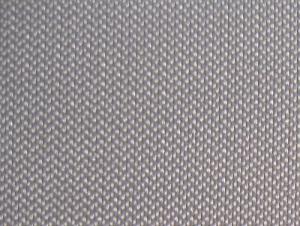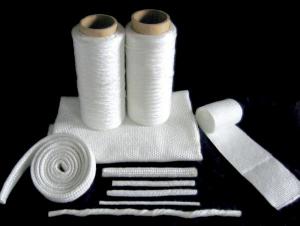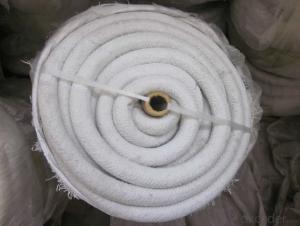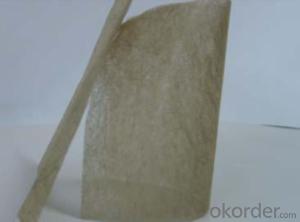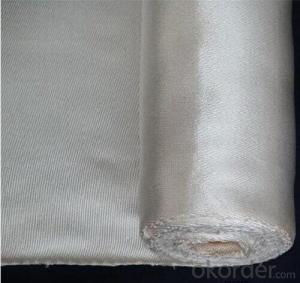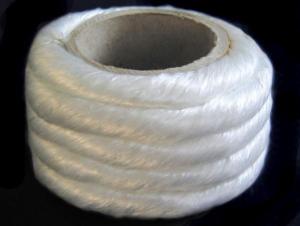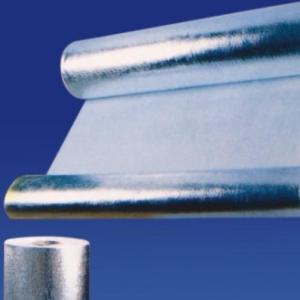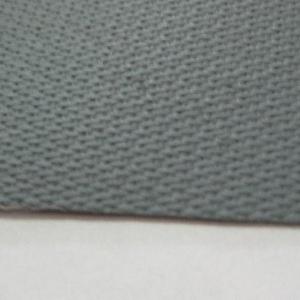pure white ceramic fiber blanket with low price
- Loading Port:
- Shanghai
- Payment Terms:
- TT OR LC
- Min Order Qty:
- 1 m.t.
- Supply Capability:
- 111 m.t./month
OKorder Service Pledge
OKorder Financial Service
You Might Also Like
Specifications
Low thermal conductivity
Excellent insulating effect
Good chemical stability
Stable high temperature performance
Easy to cut
Features:
1.Needled blanket
2.Non-combustible
3.Low density and low thermal conductivity
4.Excellent chemical stability
5.Resilience and resistance to thermal shock
6.Flexible and easy to cut or install
7.Good sound insulation and erosion resistance
8.Contain no organic binder
9.Asbestos free
10.Blanket density:96kg/m3,128kg/m3
11.Other thickness or density variations are subject to order
12.Available size:7200mm*610mm*10-50mm
13.Additional coating or coverings according to order
14.Package:520 cartons in a 40HC container,440 cartons in a 40GP container,220 cartons in a 20GP container
Application:
This high-quality fiber blanket has excellent processing or construction strength and anti-high temperature
performance which can meet demands for the application of heat insulation on various hot faces and cold
faces in different furnaces. It is a new type of refractory and insulating materials provided by our company
for customers. The product is white with formal dimension and integrates the performance of heat insulation
and thermal preservation together.
1. The insulating material for wall lining and back lining of industrial furnaces and heating devices
2. Insulating materials of high-temperature equipment
3. Material to produce module/folded module
Physical and chemical composition
Common | Standard | Pure | High Aluminium | Zirconium | ||
Classification temperature(°C) | 1100 | 1260 | 1260 | 1360 | 1430 | |
Work temperature(°C) | <1000 | 1050 | 1100 | 1200 | 1350 | |
Color | White | Pure white | Pure white | Pure white | Pure white | |
Density (kg/m3) | 96 | 96 | 96 | 128 | 128 | |
Permanent linear shrinkage(%)(after24 hours,density 128kg/m3) | -4 | -3 | -3 | -3 | -3 | |
Thermal conductivity (w/m.k) density 128kg/m3)
| 0.09(400°C) | 0.09(400°C) | 0.09(400°C) | 0.132(600°C) | 0.76(600°C) | |
Tensile strength (Mpa) density128kg/m3) | 0.08-0.12 | 0.08-0.12 | 0.08-0.12 | 0.08-0.12 | 0.08-0.12 | |
Chemical Composition (% | AL2O3 | 44 | 46 | 47--49 | 52-55 | 39-40 |
AL203+SIO2 | 96 | 97 | 99 | 99 | - | |
AL2O3+SIO2+Zro2 | - | - | - | - | 99 | |
Zro2 | - | - | - | - | 15-17 | |
Fe2O3 | <1.2 | <1.0 | 0.2 | 0.2 | 0.2 | |
Na2O+K2O | ≤0.5 | ≤0.5 | 0.2 | 0.2 | 0.2 | |
Size (mm) | Common 7200*610*10-50 others up to buyer | |||||
- Q:Is glass fiber textile lightweight?
- Yes, glass fiber textile is lightweight. Glass fiber is made from thin strands of glass that are woven together to form a textile material. This material is known for its lightweight properties, making it a popular choice in various industries such as aerospace, automotive, and construction. The lightweight nature of glass fiber textile allows for easier handling, transportation, and installation, while still providing high strength and durability. Additionally, its light weight contributes to energy efficiency in applications such as insulation and composites. Overall, glass fiber textile is an ideal choice when a lightweight material with excellent performance characteristics is required.
- Q:Can glass fiber textile be used in composites?
- Yes, glass fiber textile can indeed be used in composites. Glass fiber textiles, often referred to as fiberglass fabrics, are commonly used as reinforcement materials in composite manufacturing. These textiles are made from fine glass fibers that are woven together to form a fabric. The fabric can be impregnated with a resin, such as polyester or epoxy, to create a composite material. Glass fiber textiles are highly versatile and offer several advantages when used in composites. Firstly, they have excellent strength-to-weight ratio, making them ideal for applications where lightweight materials are required. Additionally, glass fiber textiles have high tensile strength and stiffness, which helps to reinforce the composite structure and improve its overall mechanical properties. Glass fiber textiles also exhibit good resistance to chemicals, moisture, and UV radiation, making them suitable for both indoor and outdoor applications. They can be easily molded into complex shapes and can be tailored to specific requirements by varying the weave pattern, weight, and thickness of the fabric. In summary, glass fiber textiles are widely used in composites due to their strength, lightweight nature, resistance to various environmental factors, and ease of customization. They have become a popular choice in industries such as aerospace, automotive, construction, and marine, where the demand for strong and durable materials is high.
- Q:How does glass fiber textile perform in terms of thermal insulation?
- Glass fiber textile performs very well in terms of thermal insulation. Its high insulation properties allow it to trap air pockets, reducing heat transfer and maintaining a comfortable temperature. Additionally, glass fiber textile is resistant to heat, making it an ideal choice for applications requiring thermal protection.
- Q:How do glass fiber textiles compare to natural fibers in terms of sustainability?
- Glass fiber textiles and natural fibers exhibit notable differences in sustainability. Whereas natural fibers, like cotton or hemp, derive from renewable resources, glass fiber textiles are produced using non-renewable materials such as sand and limestone. The extraction and processing of these raw materials for glass fibers impose significant environmental consequences, such as energy consumption and greenhouse gas emissions. Moreover, the manufacturing of glass fiber textiles necessitates substantial amounts of energy and water, thereby exacerbating their environmental footprint. Conversely, natural fibers can be cultivated with minimal water and energy inputs, often benefiting local agricultural communities and reducing reliance on synthetic materials. Furthermore, glass fiber textiles lack biodegradability, leading to their persistence in the environment for extended periods and contributing to waste accumulation and potential pollution. In contrast, natural fibers, being organic in nature, typically biodegrade naturally over time, thereby minimizing their impact on landfills and ecosystems. However, it is worth noting that the sustainability of glass fiber textiles can be enhanced through recycling and the adoption of more energy-efficient manufacturing processes. By recycling glass fibers, the demand for virgin materials can be reduced, consequently lowering environmental impacts. Additionally, advancements in technology and production methods can aid in diminishing the energy and water consumption associated with glass fiber production. In conclusion, while glass fiber textiles possess certain advantages such as strength and durability, they generally yield a higher environmental impact in terms of sustainability compared to natural fibers. Conversely, natural fibers are renewable, biodegradable, and require fewer resources for production. Nonetheless, improvements in manufacturing practices and recycling endeavors can augment the sustainability of glass fiber textiles, thereby rendering them a more environmentally friendly option in the future.
- Q:Can glass fiber textiles be used in reinforcement of adhesives?
- Yes, glass fiber textiles can be used in the reinforcement of adhesives. Glass fiber textiles are known for their high strength and stiffness, making them an excellent choice for enhancing the mechanical properties of adhesives. When incorporated into adhesives, glass fiber textiles can improve the tensile and flexural strength, impact resistance, and overall durability of the adhesive joint. The glass fibers act as a reinforcement by distributing stress more evenly across the adhesive, preventing crack propagation and increasing the load-bearing capacity. Additionally, glass fiber textiles can also enhance the dimensional stability and thermal resistance of the adhesive, making it suitable for a wider range of applications. However, it is important to consider the compatibility between the glass fibers and the adhesive matrix, as well as the proper handling and dispersion of the fibers to ensure optimal reinforcement effectiveness.
- Q:How do glass fiber textiles affect drape?
- Glass fiber textiles have a rigid and stiff nature, which significantly affects the drape of fabrics made from them. Due to their inherent stiffness, glass fiber textiles tend to have poor drape characteristics compared to more flexible and pliable materials. This lack of drape results in fabrics made from glass fiber textiles retaining their shape and resisting natural folds and pleats.
- Q:Is glass fiber textile breathable?
- No, glass fiber textile is not breathable.
- Q:How should the glass fiber felt be used in detail?
- Use of glass fibresGlass is a kind of brittle material known. Interestingly, once the glass is heated after being drawn into a much thinner than a human hair fiber glass, it seems completely forget their own nature, be like synthetic fiber as soft and tough, even more than the same thickness of the stainless steel wire!
- Q:Can glass fiber textiles be used for making protective helmets or headgear?
- Yes, glass fiber textiles can be used for making protective helmets or headgear. Glass fiber textiles are lightweight yet strong, making them ideal for protective gear such as helmets. The fibers are woven together to create a durable and impact-resistant material that can help absorb and distribute the force of an impact, thereby reducing the risk of head injuries. Additionally, glass fiber textiles have good heat resistance and insulation properties, which further enhance their suitability for headgear. However, it is important to note that helmets and headgear should comply with relevant safety standards and regulations to ensure maximum protection.
- Q:How does the thickness of glass fiber textiles affect their performance?
- The thickness of glass fiber textiles plays a significant role in determining their overall performance. Thicker glass fiber textiles generally offer improved strength and durability compared to thinner ones. Firstly, thicker glass fiber textiles have higher mechanical strength, making them more resistant to breakage or deformation under stress. This is particularly important in applications where the textiles need to withstand heavy loads or external forces. Thicker textiles can bear greater loads and distribute stress more effectively, enhancing their overall performance and longevity. Secondly, the thickness of glass fiber textiles also affects their thermal insulation properties. Thicker textiles have a higher thermal resistance, meaning they are better at preventing heat transfer. This makes them ideal for applications where temperature control is crucial, such as insulating walls or pipes in industrial settings. Thicker textiles can effectively reduce heat loss or gain, improving energy efficiency and reducing heating or cooling costs. Furthermore, thicker glass fiber textiles tend to have better sound insulation characteristics. The increased thickness allows for better absorption and dampening of sound waves, reducing noise transmission. This makes them suitable for applications where noise reduction is a priority, such as in automotive or building industries. However, it's important to note that the increased thickness of glass fiber textiles can also make them heavier and less flexible. This can limit their applicability in certain situations where lightweight or flexible materials are required. Additionally, thicker textiles may require more space and specialized installation methods, increasing the overall cost and complexity of a project. In conclusion, the thickness of glass fiber textiles directly influences their performance. Thicker textiles offer improved strength, durability, thermal insulation, and soundproofing capabilities. However, the trade-off is that they may be heavier, less flexible, and require more specialized installation. Therefore, the selection of the appropriate thickness should be based on the specific requirements and constraints of the intended application.
1. Manufacturer Overview |
|
|---|---|
| Location | |
| Year Established | |
| Annual Output Value | |
| Main Markets | |
| Company Certifications | |
2. Manufacturer Certificates |
|
|---|---|
| a) Certification Name | |
| Range | |
| Reference | |
| Validity Period | |
3. Manufacturer Capability |
|
|---|---|
| a)Trade Capacity | |
| Nearest Port | |
| Export Percentage | |
| No.of Employees in Trade Department | |
| Language Spoken: | |
| b)Factory Information | |
| Factory Size: | |
| No. of Production Lines | |
| Contract Manufacturing | |
| Product Price Range | |
Send your message to us
pure white ceramic fiber blanket with low price
- Loading Port:
- Shanghai
- Payment Terms:
- TT OR LC
- Min Order Qty:
- 1 m.t.
- Supply Capability:
- 111 m.t./month
OKorder Service Pledge
OKorder Financial Service
Similar products
New products
Hot products



